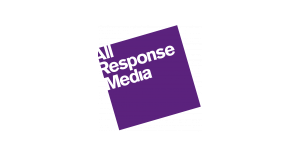It’s been over a year since DAX introduced their effectiveness measurement tool. DAX is the Digital Audio Exchange created by Global, giving advertisers access to 160 million listeners with content across radio stations as well as platforms such as Soundcloud and audioBoom. This allows advertisers to measure and track the impact of their advertising, through the form of a ‘Listener ID’.
The Listener ID:
The Listener ID is DAX’s solution to give advertisers a more detailed understanding of listener behaviour after hearing their creative. Across desktops, mobile browsers or mobile apps, unique IDs are assigned to the listener and then with the help of a specialised tag on the advertiser’s website, DAX can track the listener’s consumption of audience and conversion journey. In simple terms, the audio creative is tagged, and the advertiser website is tagged, and DAX can track and profile the overlapping converted users.
Reporting:
Currently, DAX requires certain levels of a budget for the detailed measurement analysis they’re proposing. At lower level budgets we can get the ‘BAU’ reporting of the top-line delivery of impacts.
Higher level reporting can include the following:
- Delivery of impacts versus site traffic
- Converted site traffic by hour
- Conversions by creative
- A demographic profile of those converters and additional audience insights such as interests and attitudinal behaviour
All Response Media viewpoint
DAX is saying they can report on conversions when a creative has been merely ‘heard’. So, why aren’t we jumping on the bandwagon? Cost is at the centre of our media recommendations, and DAX comes with a base cost per thousand (CPT) of £13, with additional costs for layers of targeting and a minimum spend of £21,500. Therefore, it is unlikely that the cost per response will balance out the level of reporting we could get compared to other media such as TV and even non-digital radio.
When it comes to radio, it is not the case that we can’t track response at all. We can track radio response successfully via a ‘drop-down’ on the website and text codes or numbers. In fact, we have seen radio deliver a higher quality lead when compared to TV. For example, cost per call for radio can be up to +94% higher than TV, however, the cost per conversion can be -11% vs TV, with a greater value. Indicating that radio can be a more considered response versus TV for some sectors.
Also, in relation to the DAX reporting, we can track response through ARMalytics®, for creatives and call to actions, which have a big part to play in increasing the ‘direct’ response we can get from radio. Following this, we can therefore model more detailed performance and roadmap optimisations, which can help increase response rates even further.
By buying at the right cost and by employing the right analysis methodologies, radio can really add tangible value to the performance of your marketing campaigns.


